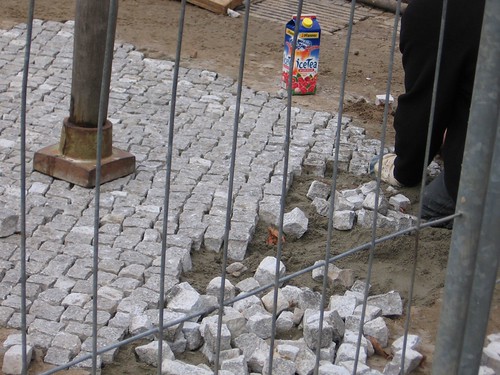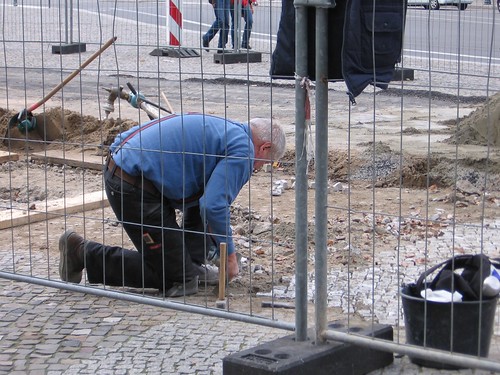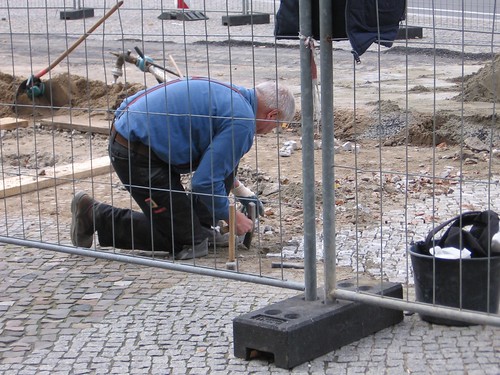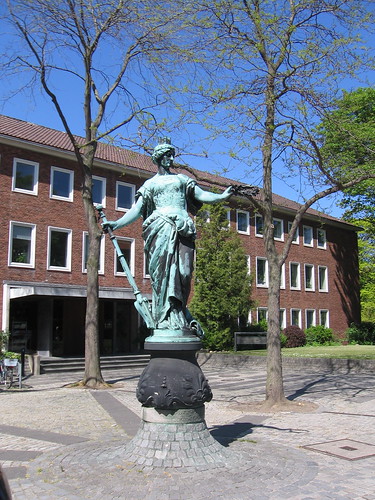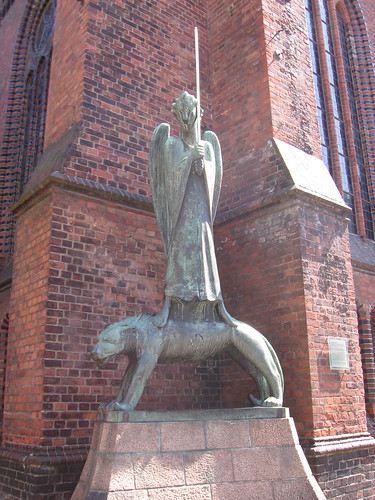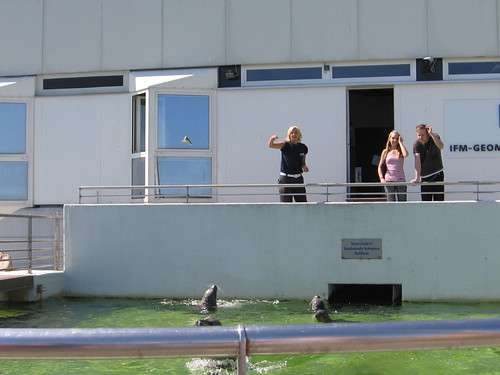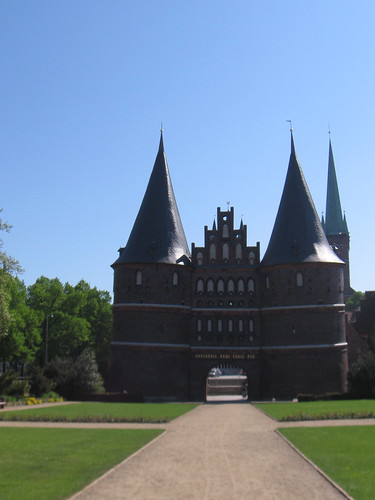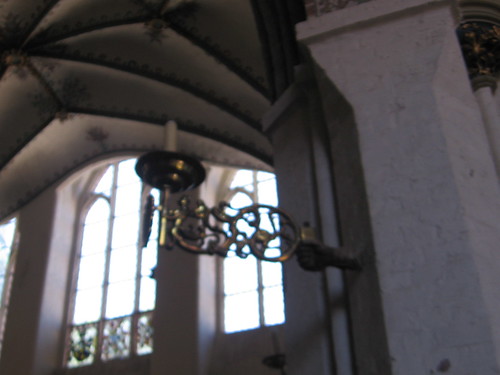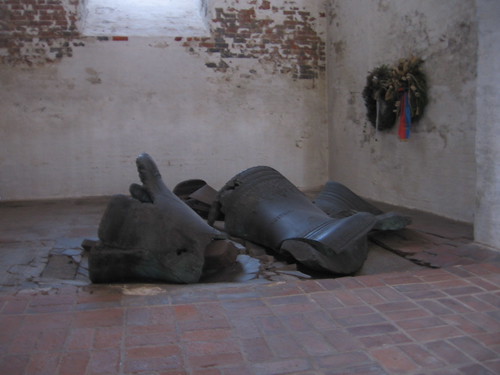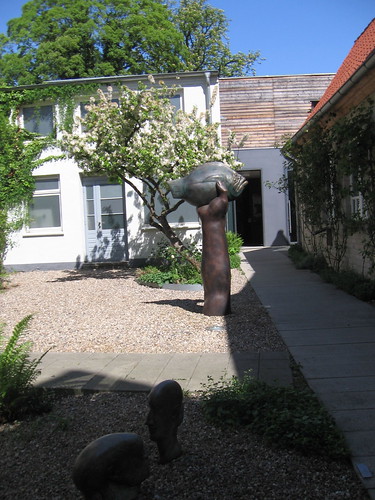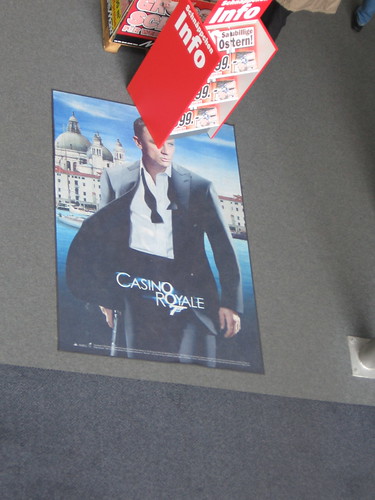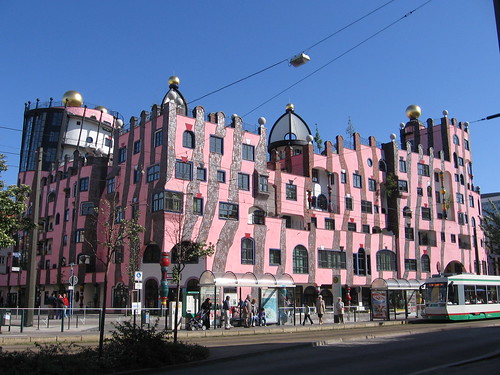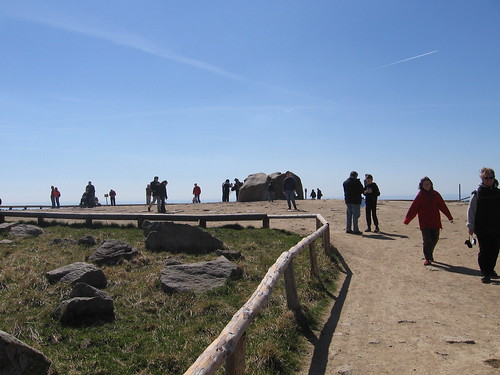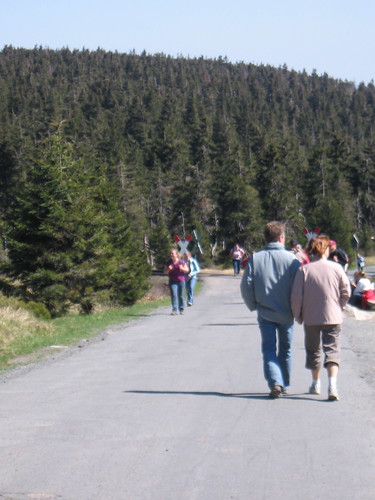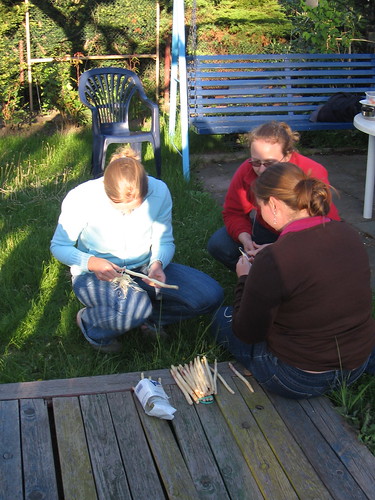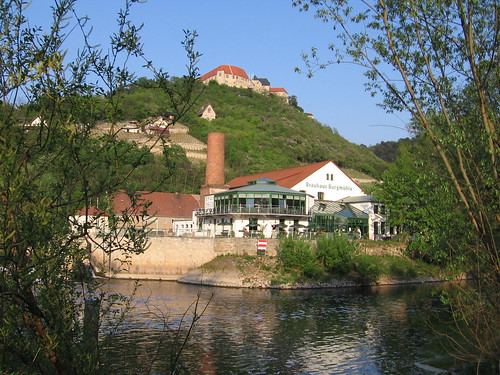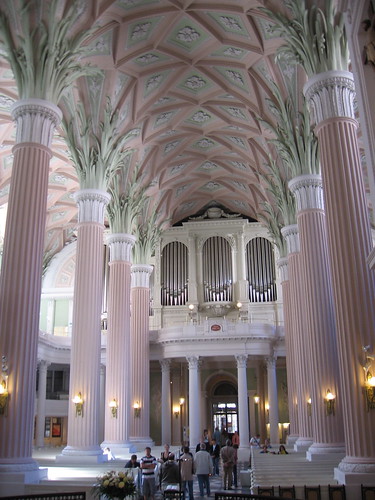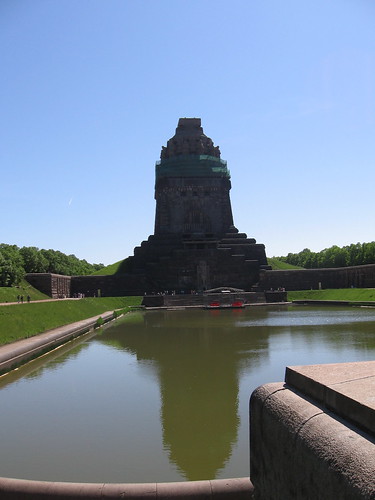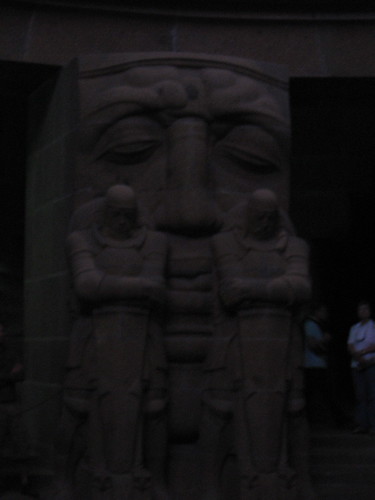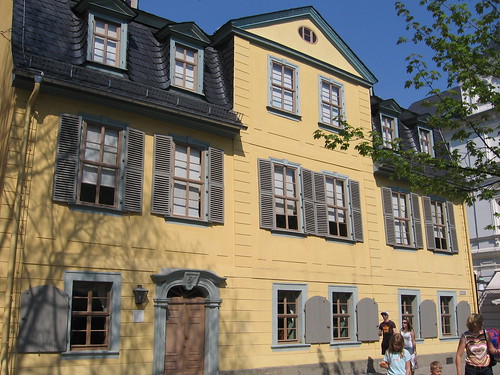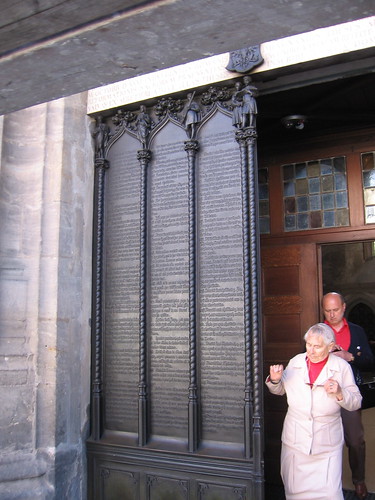You would really not believe the day I had.
It started out great. I have a friend staying with me for a few days, and we were a bit disappointed yesterday when we couldn't go on a boat tour of the city. It was evening (after 6) and only a handful of people were interested, so the crew decided to just pack up and go home, despite the fact their sign advertises departure times well into the evening. I don't really blame them, but it does make me roll my eyes and say "Typisch deutsch."
So we were thrilled when today turned out to be a beautiful, sunny, warm spring day. Despite there being even fewer people on the boat than yesterday evening, the tour actually departed and we got our river cruise. Sadly, I don't have any pictures; my camera batteries were dead, all
sixbatteries I had in my bag. (Note to self: Your rechargeable batteries no longer recharge. Buy new ones!)
With an hour or so to kill in the afternoon, we went to check out a cool little area in Prenzlauerberg that he knew about, with a nice farmer's market and a funky little felt shop. To get to the felt shop, we had to walk around a construction site. We were almost clear of their fence, when disaster struck.
The facade painters, cleaning up for the day, carelessly tossed an open bucket of house paint into the almost-full dumpster, splashing me, head-to-toe, with gray, oil-based paint!
I was in utter shock. I just stood there with my mouth open, covered in paint. Not fifteen minutes previously my friend had joked about how I looked like a Berliner, and my response had been that I should, given that I'd bought
everything I was wearing in Germany. The jeans and shoes are a few weeks old, but I was wearing a beautiful spring green blazer for the first time. And now they were all ruined.
My friend roused me and told me we needed to go talk to the crew, since they really should reimburse me for the cost of new clothes. We asked for his supervisor's number, but I was still too shocked to really deal with the situation. With the number in hand, we walked a few houses down and I ducked into a bar/restaurant to use their restroom to to get as much of the paint off as I could.
Luckily, most, nearly all, came off of my shoes, jeans and top almost immediately.
See?

Basically all that remains are one or two spots that look like this.
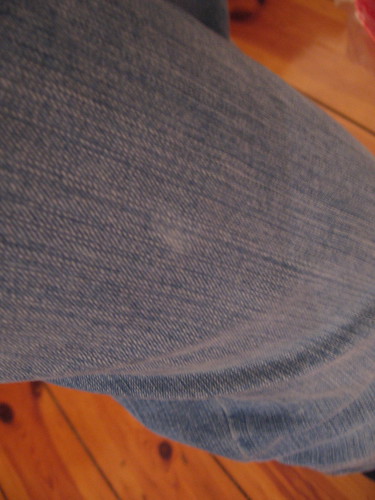
The jacket didn't fare so well, due to a combination of the light color and the cotton fabric. I called the number the man had given me, and, surprise, surprise, it didn't work. We walked back to the construction site and launched into an explanation with the first two guys we could find. Most of the time I speak German pretty well, but I was just too flustered to effectively communicate in a foreign language. We managed to get the job done, though, and one of the men informed us that the bosses/administration had their office just around the corner. Off we went, to once again explain our situation in rather stilted German.
Now I was almost sorry I'd worked on cleaning my clothes, since it really looked like my jacket had been splashed with dirty water. I could have made my case much more effectively covered, head to toe, in gray paint flecks and reeking of turpentine.
The men in the office were skeptical, but we were insistent enough that the guy in charge eventually asked us to show him where it happened. I think they half-expected us to lead them to a completely different construction site. (This is Berlin after all; there were others in the immediate vicinity. There was even someone else painting an entryway a few doors down.) Once we got back to the scene of the crime, though, it didn't take long to convince the guy what happened. He saw the full dumpster and the paint splatters on the ground and could smell the wet paint.
We watched him go track someone down and could tell by his gestures that he was relating the story of what happened. They fished the still-half-full paint cans out of the dumpster and figured out who was responsible. "The Turks." Apparently the subcontractor in charge of painting the facade was a Turkish[-German] company. As unhappy as I was with the painters who had ruined my clothes, I found the way they spoke of "the Turks" very distasteful.
We went back to the office, where the man in charge had me write down my contact info and called the contractor to inform them what had happened. I was a bit more relaxed at this point, since I no longer had to convince anyone what had happened and it was fairly clear I was going to get a reimbursement of some kind, so I could take a moment to observe some of the interesting cultural differences.
The German job/site manager explained to me that he would take my information and give me the painting company's contact info so that I could send them either the cleaning bill or the receipt for a new jacket. While I was there he placed a phone call to the [Turkish] painting company, in order to inform them of the event and let them know a bill would be coming and that they would need to file a claim with their insurance company.
Insurance, Rules, Order, Forms, Bureaucracy. Very German.
Not long after his phone call the painting crew came in, looking slightly sheepish. When everything had been explained to them, they preferred to handle the situation in a very un-German manner. We all shook hands and I walked out of there with a €50 bill in my pocket. (They did ask me to sign a paper acknowledging that they had compensated me for the damage, which I did willingly.)
This was a perfect resolution, in my opinion. €50 is about what I spent for the jacket and the jeans, and I was pretty sure I wouldn't need to replace the jeans. As frustrating as the whole situation was, I do realize it was just an accident, a random, freak occurrence that happened in the blink of an eye. They were careless in their hurry to get home for the evening and enjoy their Feierabend (tomorrow is a holiday). I can certainly understand that.
I also realize that these are people who work hard and don't have an easy life. Germany
does not treat its immigrants (and children of immigrants) very well. They have little or no access to language training, which severely limits their educational opportunities, which in turn limits their job opportunities, leaving "immigrants" working in food servive (running Dönor stands or kiosks) or other menial labor. These painters likely work hard labor for long hours and relatively little pay, and all because Germany never bothered to give a damn about people with their skin color.
(I could go on and on about the inequalities in the German educational system and in German society, but it should probably be its own post.)
On the way back to my apartment I stopped at not one but two H&Ms to look into replacing the jacket. Each store only had two left, only one even close to my size. I stood in the store for about ten minutes, first trying on my [now spotted] size 12 and then trying on the new size 10. During this process the whole event took a very weird turn.
As I'm slipping one of the blazers on for the fifth time, I hear a voice pipe up, "If I may say, I don't like it at all. It doesn't look very good."
Ironically, at that point I was wearing the jacket I already owned.
Thanks a lot. Bitch.
But, really, she was just tasteless, right? This doesn't look bad!

Does it?
In the end I bought the jacket. I had the cash for it, and I was afraid, since it's on clearance, that I wouldn't be able to find another one and would be disappointed with my stained blazer forever.
If I find a new size 12, I might return the size 10.
Or not.
Once I got home and looked the jackets over, I realized I have no idea what I should do.
Fresh from my furious scrubbing, the blazer still had noticeable spots and did not look good. Once, it dried, it looked okay.
You can actually hardly see the spots. (Click for bigger images.)
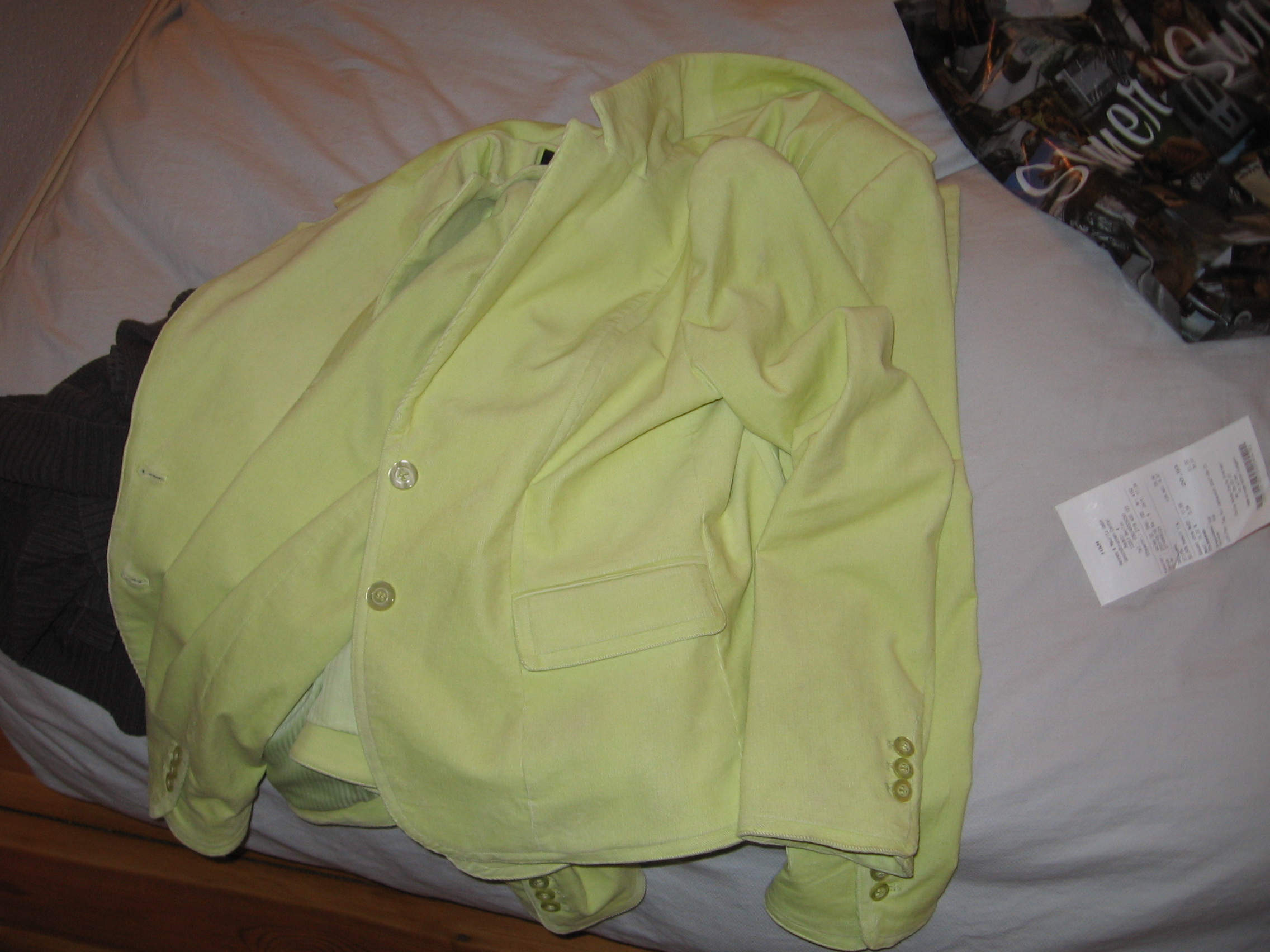
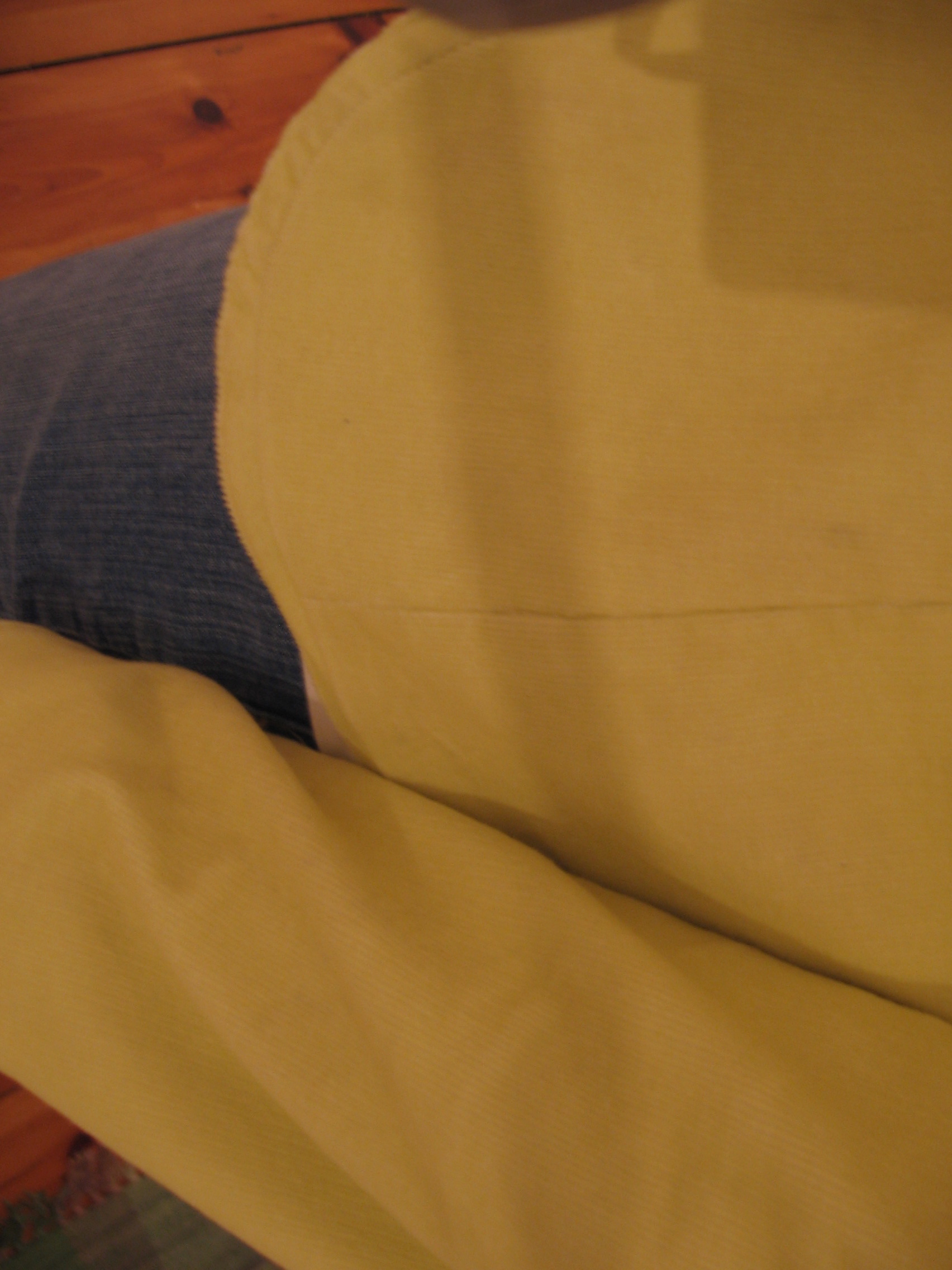
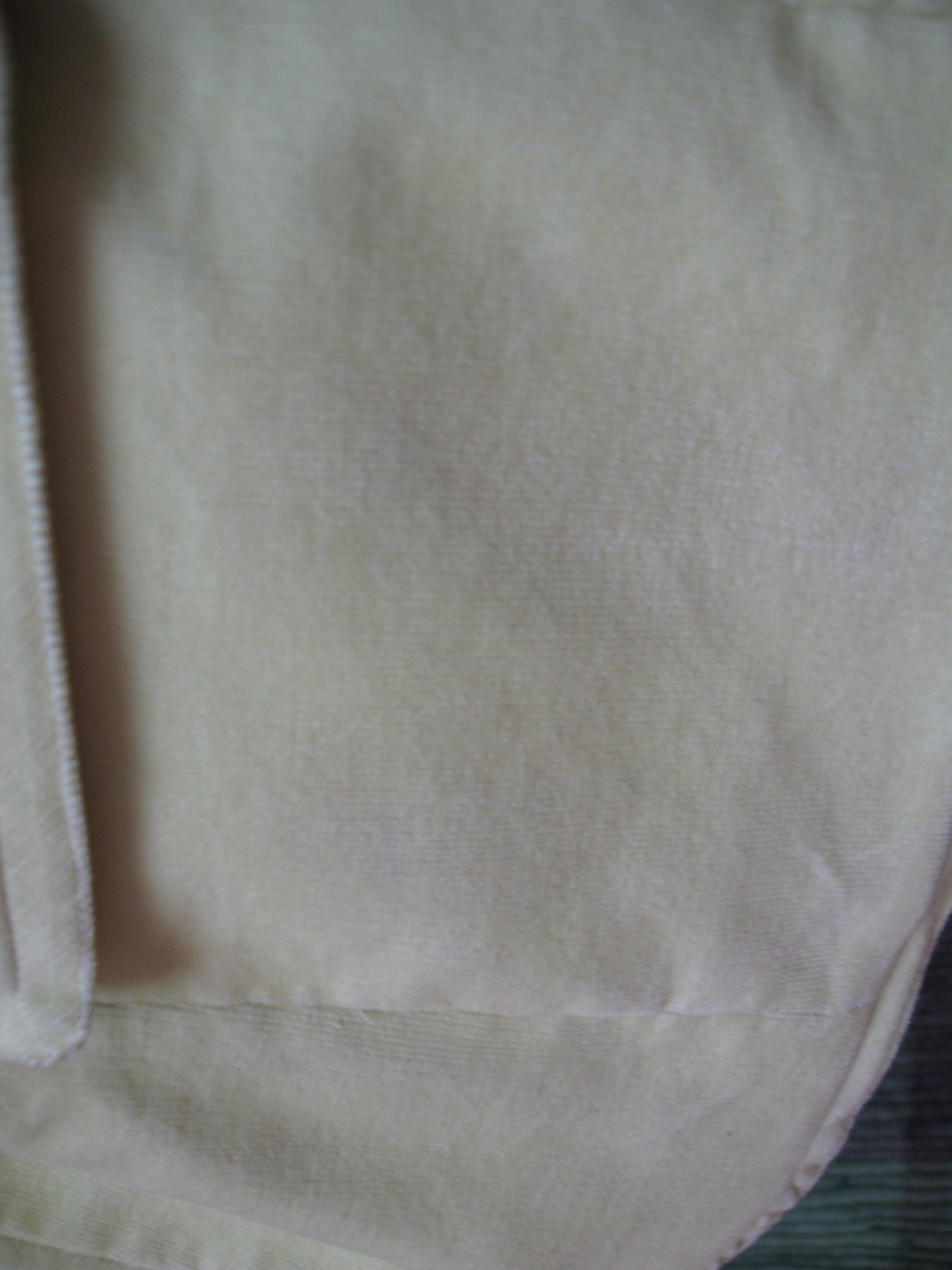
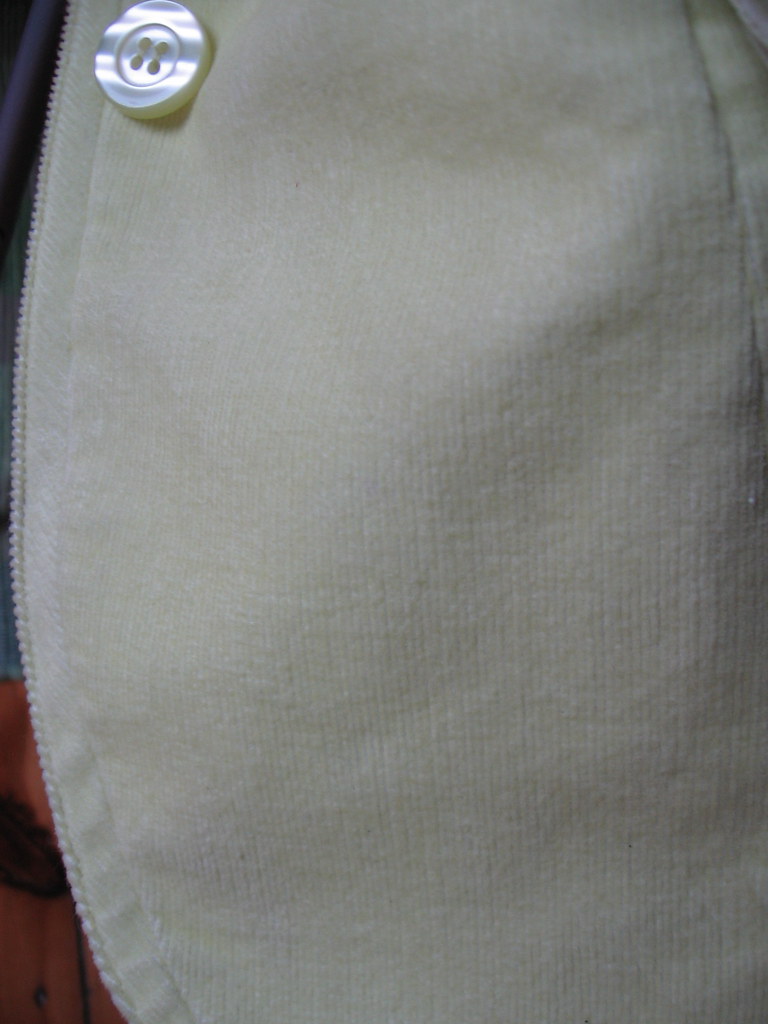

They're there, but it's not bad.
When I bought the jacket in the first place, I wavered between buying the 10 and the 12, and opted for the 12. It fits, but the shoulders and arms feel a bit big to me. But the 10 feels tight across the middle. Which do you think fits better?
The size 12:

The 10:

The 10, unbuttoned:

I just don't know what to do. Return the 10 and look for a 12? Return the 10 and wear the blazer with the definitely-there-but-barely-noticeable spots?
Being a thoroughly modern girl, though, I decided the best way to solve my dilemma is to ask the internet.




